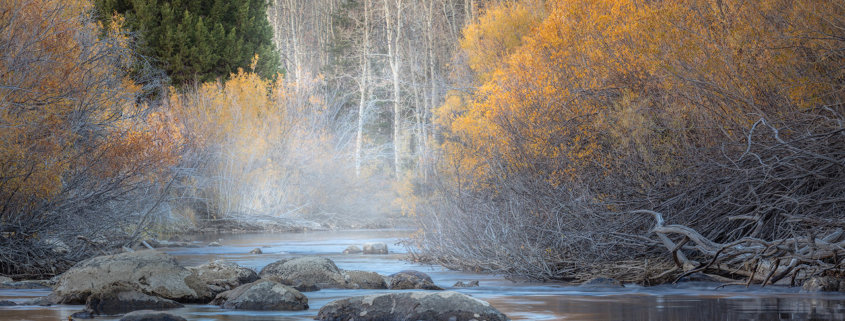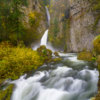Essential ideals for Better Fall Photography
Autumn many landscape photographers’ favorite season… and for good reason. It is a magical time when entire landscapes transform into stunning displays of vibrant fall colors. The days are shorter, which means more sleep for the photographer, and the Golden Hour is longer, which means more opportunities for exploring and creating beautiful photographs. Fall photography presents some specific challenges though. So, I’ve put together these tips and photographs to inspire you as you prepare to get out and make your own beautiful Fall foliage pictures.
Choose Your Moment
To ensure that you are at the location of your choice at the right time, it’s a good idea to do some research beforehand. To predict exactly when Fall color will peak in any particular region is difficult, as it varies from year to year. Seasonal rainfall, winds, drought, and freezing temperatures or early snowfall will impact the date that trees change color and how long the leaves remain on the trees. In the Western U.S., such as Colorado or the Eastern Sierras in California, color peaks at higher elevations before lower elevations. On the East Coast, elevation is not so much of an influence and peak color moves North to South.

“Solitaire”, Oct. 21, 2013, Eastern Sierra, California — Canon 5D Mark II, Canon 24-105 f/4 EF Lens, ISO 100, 105mm, f/18, .5 sec.
Autumn foliage can vary greatly depending on the region and that year’s conditions, so be sure to do your research before you plan your trip. Talk to the locals to find out where the best color is that year. State tourism organizations will often have information on peak Fall color. There are also Facebook groups that share news about local Autumn color, as well as other web-based forums.
There are a plethora of online resources to help you plan the timing of your trip. The Weather Channel is a good resource for predictive peak Fall color; The Smoky Mountain parks guide has a really cool interactive map; and, Discover New England has great information about East Coast color.
Ideally, you should complete your planning well in advance. If you can, get to your chosen region ahead of time to scout specific locations and make test compositions.
Essential Fall Photography Gear
Well, there’s no doubt about it – you’re going to need a mirrorless or a DSLR camera to photograph fall colors.
- Variety of Lenses —Carry a lens with a wide range of focal lengths. Or better yet, a range of lenses for wide angle, telephoto, and macro.
- Tripod — A tripod is essential if you want to be able to photograph in low light situations without pushing up the ISO.
- Polarizing filter — Use a polarizing filter to knock down the shiny parts of the leaves and deepen the color of the leaves. A polarizing filter can also help to eliminate atmospheric haze.
A polarizing filter helped enrich the colors of these Cottonwoods from Zion National Park in the image below. Using a sturdy tripod ensured a sharp image since this was made with a slow shutter speed.

“Colors of Zion”, Oct. 31, 2017, Zion National Park, Utah— Canon 5DsR, Canon 24-70mm f/2.8 lens, ISO 100, 70mm, f/16, 1/5 sec.
Weather protection for your gear — Autumn can bring sudden changes in weather. I carry a large golf umbrella and an inexpensive plastic rain shield for my camera and lens. Using a lens hood (if you don’t already) further helps to protect the front of the lens from snow and rain. I also keep a small terrycloth towel in my bag along with a microfibre lens cloth.
Camera Settings for Photographing Fall Colors!
In capturing foliage in fall photography, it is worth mentioning some specific camera settings that can save you from potentially ruining a good landscape image.
Overcoming Windy Conditions
The sight and sound of wind blowing through an Aspen grove is perfect for making a video. Not so much for still photographs. If there is even a puff of wind, selecting the proper shutter speed is critical. Depending on the focal length, you’ll need a shutter speed of at least 1/30 sec. to freeze motion. This could be a challenge if the light is low, which means you’ll need to push the ISO up until you can expose at the desired shutter speed and f-stop.
The wind was howling, and snow was still falling as this Autumn storm moved through the Canadian Rockies (image below). This image was made handheld with a fast shutter speed, a polarizing filter, and protection for the camera.

“Snow in Autumn”, Canadian Rockies, Oct. 2, 2017. Canon 5DsR, Canon 100-400mm f/4-5.6 EF II Lens, 800 ISO, 153mm, f/6.3, 1/400 sec.
Watch the Red Channel during Fall Photography
If your camera supports RGB histogram, be sure to review the red channel in the histogram. Fall foliage from yellow to red is expressed in the red channel of the histogram. A composite histogram won’t reveal a clipped red channel, and if the yellows or reds are overexposed, precious detail in the leaves will be lost. If your camera doesn’t have the capability to display multi-channel histograms, then be sure to bracket or make one additional exposure stopped down by one full stop so that you’ll have at least one frame that will be exposed properly.
The image above is purposely over-exposed this image to demonstrate the importance of reviewing the RGB channels in your camera’s histogram. As you can see, the combined histogram (top graph) shows a spike to the right of the histogram, which is an indication that this frame is over exposed by about one stop. But, by reviewing the red channel, you can see that this exposure is clearly more than just slightly over exposed. The red channel is pushed hard up against the right side of the histogram, so a major exposure adjustment would be requires to correct for the over exposure.
Tips to set White balance for Autumn Photos
The dominant yellows and reds of fall photography can fool the camera into compensating and make the Autumn foliage look dull. If you normally set your camera to capture images in RAW format rather than jpeg, using your camera’s auto white balance setting is suitable, because you can always make adjustments to white balance later in post processing. However, if you have set your camera to capture .jpegs, then setting the proper white balance is critical, because you cannot fix it in post-processing. Select a white balance that preserves the warmth of the colors, such as Daylight, approximately 5200K. Experiment with your camera’s white balance setting until you find one that displays the most natural looking colors.
Don’t Forget to Have Fun!
A group of us were photographing a beautiful Autumn morning sunrise when a duck swam into our vicinity, disturbing the water. Then she stopped to preen right in the middle of my photography composition. With skillful sweet-talking I coaxed her to stand still in the water while I made a single long exposure. “Be still, darling! Don’t move! You look gorgeous!” Every photo is improved by a duck, right?

“The Duck Whisperer”, Oct. 18, 2017, Silver Lake, California. Canon 5DsR, Canon 16-35mm f/2.8 EF II Lens, ISO 100, 24mm, f/16, 1/5 sec.
Now that I’ve filled your head with technical advice about fall photography, don’t forget to have fun and feed your creative self! I’ve written an article about creativity to further inspire you here: 6 Steps to Making More Creative Landscape Photographs











